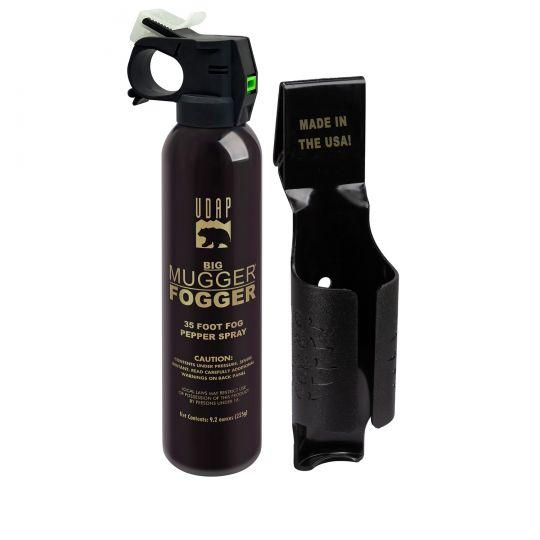Table of Contents
- Understanding Pepper Spray Canister Designs and Their Refill Compatibility
- Safety Considerations When Handling and Refilling Pepper Spray
- Evaluating the Effectiveness and Shelf Life of Refilled Canisters
- Recommended Practices for Purchasing and Maintaining Pepper Spray Products
- Closing Remarks
Understanding Pepper Spray Canister Designs and Their Refill Compatibility
When exploring the variety of pepper spray canister designs, it’s important to recognize how form influences functionality. From compact keychain models to larger handheld sprays, manufacturers tailor their designs to different user needs such as ease of carry, grip comfort, and spray range. However, these design differences extend beyond aesthetics and ergonomics-they heavily impact the availability and compatibility of refills. Most canisters have proprietary refill cartridges or specific dimensions that dictate which refills will fit correctly and operate safely.
Key factors to consider regarding refill compatibility include:
- No Universal Standard: Unlike some other personal defense tools, there isn’t a universal standard for pepper spray canister refills, meaning one brand’s refills often won’t fit another’s device.
- Material and Seal Integrity: Refills must match the original canister’s material specifications to maintain pressure and prevent leaks.
- Spray Mechanism Specifics: Different spray tips and nozzle designs can affect how the chemical is dispersed, requiring exact matching refills for optimal performance.
Always check the manufacturer’s guidelines or purchase refills directly from trusted suppliers to ensure safety and effectiveness. Understanding these nuances not only helps maintain your personal safety tool but also extends its lifespan, making your investment more sustainable.
Safety Considerations When Handling and Refilling Pepper Spray
When working with pepper spray canisters, exercise utmost caution to avoid accidental discharge or exposure. Always handle the canister with the nozzle pointed away from your face and body. Consider wearing protective gloves and eyewear to reduce the risk of irritation or injury during refilling processes. Ensure you are in a well-ventilated area, preferably outdoors, to minimize inhalation of any aerosolized particles. Avoid any open flames or heat sources, as pepper spray is typically flammable.
Keep these essential precautions in mind:
- Verify the canister’s integrity before refilling; avoid use if damaged or leaking.
- Follow manufacturer instructions precisely when using refill kits to prevent malfunction.
- Store both original and refill products securely, out of reach of children and pets.
- Dispose of empty or expired canisters responsibly, following local hazardous waste guidelines.
Evaluating the Effectiveness and Shelf Life of Refilled Canisters
Refilled pepper spray canisters can be a cost-effective and eco-friendly option, but it’s important to understand how their effectiveness compares to new products. Over time, the active ingredients in pepper spray may degrade, especially if the canister has been previously punctured or exposed to environmental factors like heat and sunlight. Because of this, refilled canisters often carry a shorter shelf life and pose a risk of reduced potency when deployed. To maintain reliability, always check the expiration date and inspect the canister for any visible wear or damage before use.
When evaluating a refilled canister, consider these key factors to ensure optimal performance:
- Source of Refill: Only trust reputable suppliers who guarantee their product’s integrity and provide clear ingredient information.
- Canister Condition: Look for dents, corrosion, or any mechanical damage that could affect spray functionality or pressure.
- Storage Conditions: Proper storage away from extreme temperatures and direct sunlight can extend effectiveness.
- Testing and Certification: Some refills undergo third-party testing to verify potency; seek those with documented quality assurance.
Taking these precautions can help you make an informed decision when choosing refilled pepper spray, ensuring your safety isn’t compromised.
Recommended Practices for Purchasing and Maintaining Pepper Spray Products
When selecting a pepper spray canister, prioritizing quality and legal compliance is essential. Opt for products from reputable manufacturers that clearly display ingredient concentrations and expiration dates. Always ensure the spray meets your local regulations to avoid legal issues. Additionally, consider the size and grip of the canister for quick and reliable deployment in emergency situations. A compact, ergonomic design often enhances ease of use and accessibility when seconds count.
Maintaining your pepper spray is just as important as choosing the right one. Store your canister in a cool, dry place away from direct sunlight to preserve its potency. Regularly check the expiration date and perform functional tests if possible, but never point the spray at yourself during testing. Keep in mind the following best practices:
- Inspect the nozzle for any blockages or damage before use.
- Avoid exposing the canister to extreme temperatures as this can affect pressure and effectiveness.
- Replace the canister immediately after use or when the expiration date passes.
Closing Remarks
In conclusion, understanding the availability and options for refilling pepper spray canisters is essential for anyone who relies on them for personal safety. While some manufacturers offer refill cartridges or sprays, others require purchasing a new canister altogether. Always check your specific product’s guidelines and local regulations before attempting any refill. Staying informed ensures that your pepper spray remains effective, reliable, and ready when you need it most. Remember, safety starts with preparedness-and knowing your options can make all the difference.Check Our Other Blogs
- StunGun – Your Trusted Source for Stun Guns, Laws, and Self-Defense Tips
- PepperSprayLaws – Your Trusted Resource for Pepper Spray Information
- StunGunLaws – Your Trusted Guide to Stun Gun Legality and Safety




